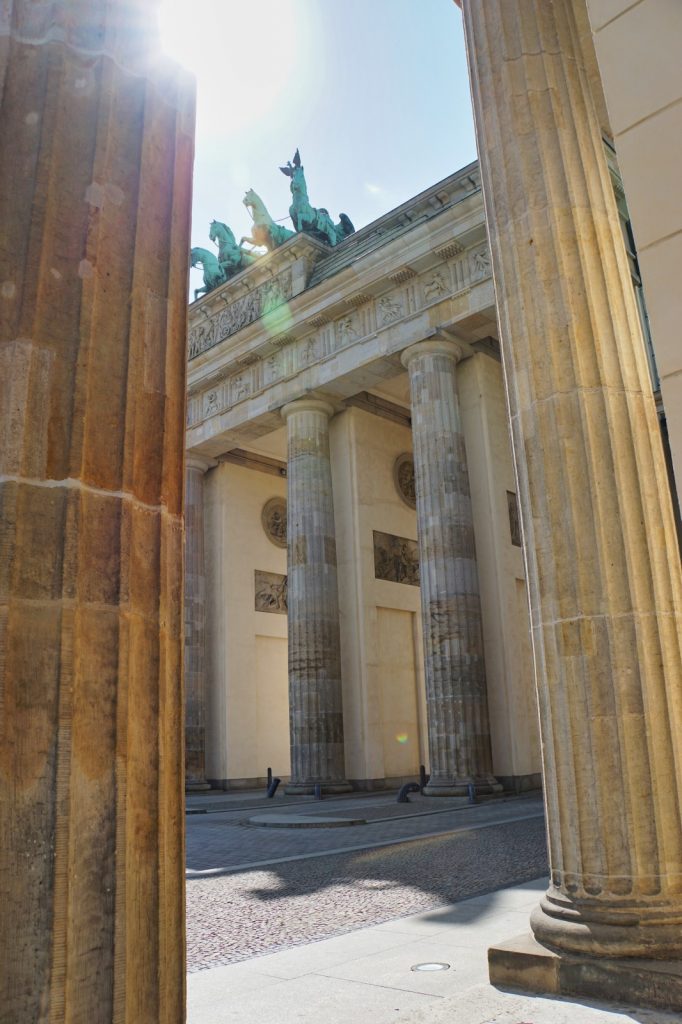|
|
General: THE PYRAMID OF AUSTERLITZ: THE MONUMENT BUILT TO HONOR THE VICTORIES OF NAPOLEON
Elegir otro panel de mensajes |
|
|
The Pyramid of Austerlitz: The monument built to honor the victories of Napoleon Bonaparte
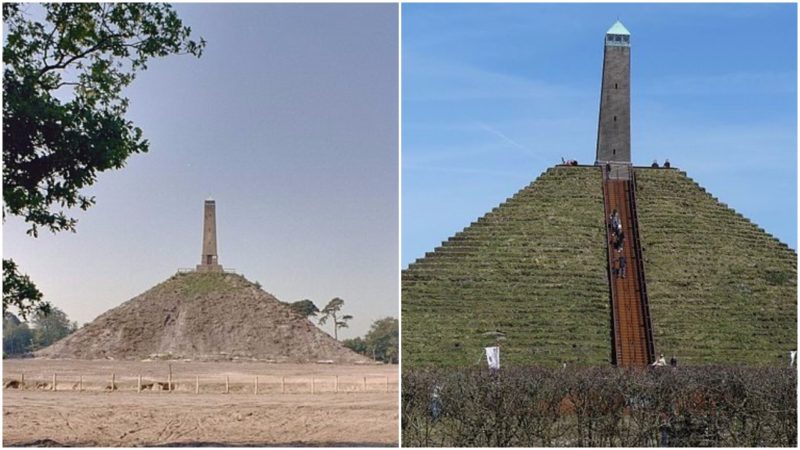 Left: The Pyramid of Austerlitz and the stone obelisk before restoration Photo credit: Rijksdienst voor het Cultureel Erfgoed, CC BY-SA 4.0. The central staircase Photo credit: G.Lanting, CC BY-SA 4.0
The pyramids have always aroused the curiosity of the people. Individuals have been intrigued by these enormous and mystical structures continually throughout every level of human evolution. But, although it seems that humans and pyramids have been strangely connected from the early beginnings of the civilizations, the purpose of this colossal buildings today is quite unknown. The true motive why the pyramids were built is lost forever. Maybe their real function was knowingly disguised by the minds who wanted to keep the humanity in perpetual dark age.
The Pyramid of Austerlitz in 2008, a short time before the end of the restoration works Photo credit: Kattjosh, CC BY 3.0
Scientists from prestige universities and independent researchers have argued about the origins of the pyramids. Some of them claim that the pyramids were tombs of the rulers, kings and pharaohs. Others say that the pyramids were ancient energetic devises. There are ideas that the pyramids are mirroring the stars of the night sky projecting the constellations on Earth in mathematical preciseness or that the pyramids were built by aliens. Some pyramids were lost forever many centuries ago under vegetation and neglect and thus became part of the ordinary landscapes.
There have been a few discoveries in recent years that show that several hills are in fact pyramids. For sure, pyramids can be found in the sands of the Sahara desert and in the Amazon forest. There are also pyramids that were built in the “new” times. The date and the purpose why these “new” pyramids were built is widely known and this is also the case with the Pyramid of Austerlitz.
The Pyramid of Austerlitz and the stone obelisk before restoration Photo credit: Rijksdienst voor het Cultureel Erfgoed, CC BY-SA 4.0
The Pyramid of Austerlitz is located at the highest point of the Utrecht Ridge, in the village of Woudenberg, near the city of Utrecht, in the center of the Netherlands. It was built by Napoleon’s soldiers under the direction of the general of the French army Auguste de Marmont in 1804. When the general was on duty in Egypt he was truly moved by the Egyptian pyramids. This monument was modeled after the pyramid of Khufu and the pyramid of Giza in Egypt. His armed forces were stationed in the area, in the so called “Zeist Camp”. In the early years of the 19th century the Netherlands was controlled by the French. There they were awaiting an invasion from the British army, but it never happened.
The Pyramid of Austerlitz in 1894 Photo credit: Rijksdienst voor het Cultureel Erfgoed, CC BY-SA 4.0
General de Marmont erected this massive monument as a tribute to the life and the victories of his friend and emperor Napoleon Bonaparte. The original memorial building was constructed from sand and earth in just 27 days. The pyramid hill was 118 feet high. At first at the top there was wooden obelisk that was 42 feet high. Auguste de Marmont called the hill “Mont Marmont”. Later he bought the land where the hill was erected.
Pyramid of Austerlitz, erosion due to rain Photo credit: Ceinturion, CC BY-SA 3.0
In the summer of 1805 General de Marmont and his soldiers were transferred to southern Germany where they fought in the famous Battle of Austerlitz (now Slavkov u Brna), when Napoleon definitely triumphed over the Russians and the Austrians.
The stone obelisk Photo credit: G.Lanting, CC BY-SA 4.0
In 1806 the new king of Netherlands, Lous Napoleon renamed the “Mont Marmont” as it is now known “Pyramid of Austerlitz”, in memory of the Battle of Austerlitz. General de Marmont wasn’t happy with this and he wrote a letter to the king to protest.
The central staircase Photo credit: G.Lanting, CC BY-SA 4.0
After leaving the Netherlands in 1805, Auguste de Marmont gave the land where the monument was built and the nearby mansion of Henschoten to three soldiers. They had to keep the pyramid in good condition. But, despite their efforts, the weather and the strong northern winds took its toll and the hill started to erode. In 1894 the current stone obelisk was built which replaced the original wooden one. The pyramid throughout the whole 20th century was in a derelict condition.
The panoramic view of the top of the pyramid hill Photo credit: K.vliet, CC BY-SA 4.0
In 2007 the monument was fully restored. In 2012 the mound was also stabilized. The pyramid of Austerlitz is a relic from the time when the Netherlands was under French control. Today it is popular tourist attraction. Visitors can climb the central staircase up to the obelisk and enjoy the panoramic view of the dense forest that surrounds the area, which is known as the heart of the Netherlands.
https://www.abandonedspaces.com/uncategorized/pyramid-austerlitz-monument-built-honor-victories-napoleon-bonaparte.html |
|
|
 Primer
Primer
 Anterior
2 a 5 de 5
Siguiente
Anterior
2 a 5 de 5
Siguiente
 Último
Último

|
|
|
"El hombre que enterró a Hitler": el secreto oculto que cambia el curso de la historia oficial
El libro "El hombre que enterró a Hitler" cuestiona la versión histórica oficial de la muerte del líder nazi. La ficción, escrita por los periodistas brasileños Marcelo Netto y Aldo Gama, se basa en una rigurosa investigación que ha llevado 14 años de trabajo, con resultados sorprendentes.
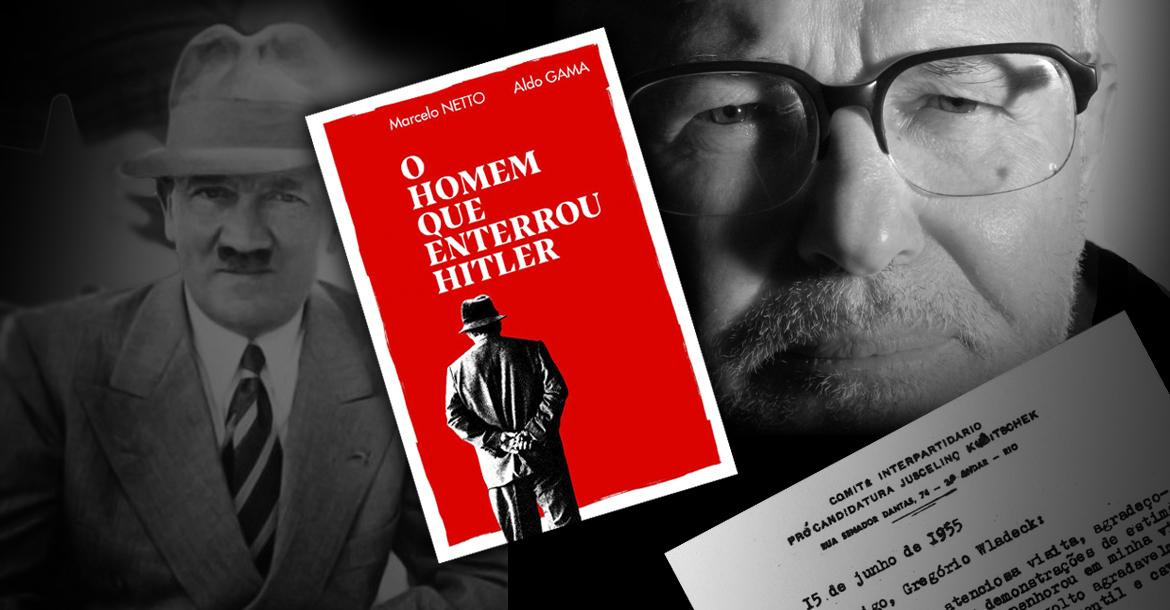 "El hombre que enterró a Hitler" y el "Sr. Fernando", quien activó la investigación. "El hombre que enterró a Hitler" y el "Sr. Fernando", quien activó la investigación.
La historia oficial presentada en libros, documentales y películas sostiene que Adolf Hitler se pegó un tiro en la cabeza el 30 de abril de 1945, días antes de que los soviéticos tomaran Berlín, donde se encontraba el bunker de Hitler. Pero, ¿y si esta versión no es la verdadera?
¿Qué pasaría si Hitler, al darse cuenta de su inminente derrota, hubiera puesto en marcha un plan de escape ya estructurado y, en la oscuridad de la noche del 28 de abril, escapando de Alemania hacia suelo sudamericano y viviendo desapercibido y sin ser molestado durante 26 años?

Te puede interesar:
Donald Trump apuntó contra Kamala Harris a 3 días de las elecciones: "Habla sobre unidad y luego me llama Hitler"
¿Realidad o ficción?
En “El hombre que enterró a Hitler”, Marcelo Netto y Aldo Gama crean una ficción instigadora , que atrapa al lector de la primera a la última línea. Pero, se puede apreciar, a lo largo de la lectura, que la información contenida en el trabajo se basa en una investigación periodística exhaustiva y coherente, realizada por los propios autores. Información que, de ser probada en el futuro (posiblemente inmediato), podría convertirse en una revelación historiográfica sin precedentes. El narrador de la ficción asegura que no ha podido, hasta el final de la obra, probar los hechos mencionados. Pero presenta suficiente riqueza de detalles para provocar en el lector la conocida “pulga detrás de la oreja”, el beneficio de la duda sobre la versión oficial tan repetida a lo largo de la historia. Marcelo Netto, uno de los autores, dice que él y Aldo Gama se decidieron por el género de ficción, y no por un libro-reportaje, precisamente para que la obra no fuera tratada como una teoría de la conspiración, aunque ambos persisten en la investigación de varias pistas contenidas en el texto.
“Realmente no es fácil creer en una versión que va en contra de la esencia de la historia oficial. Deconstruir el sentido común es complicado. Más aún porque hasta ahora no hay pruebas irrefutables que desmantelen la hipótesis de que Hitler se suicidó. Por otro lado, la gente tampoco cuestiona lo contrario, que tampoco hay evidencia de su suicidio. Queremos, con el libro, al menos darle al lector la posibilidad de cuestionar esto”. Según Marcelo Netto, la saga por confirmar que Hitler habría vivido la mayor parte del tiempo en Brasil, Argentina y Paraguay y habría muerto a los 81 años -el 5 de febrero de 1971- ha durado 14 años y continuará. “Estamos a punto de confirmar que un notable jerarca nazi del círculo íntimo de Hitler, que habría huido de Berlín en el mismo avión que él, terminó sus días en São Paulo”, revela.
Canal 26 habló en ENTREVISTA EXCLUSIVA con Marcelo Netto, uno de los responsables de la investigación que podría revertir el curso mismo de la historia conocida.
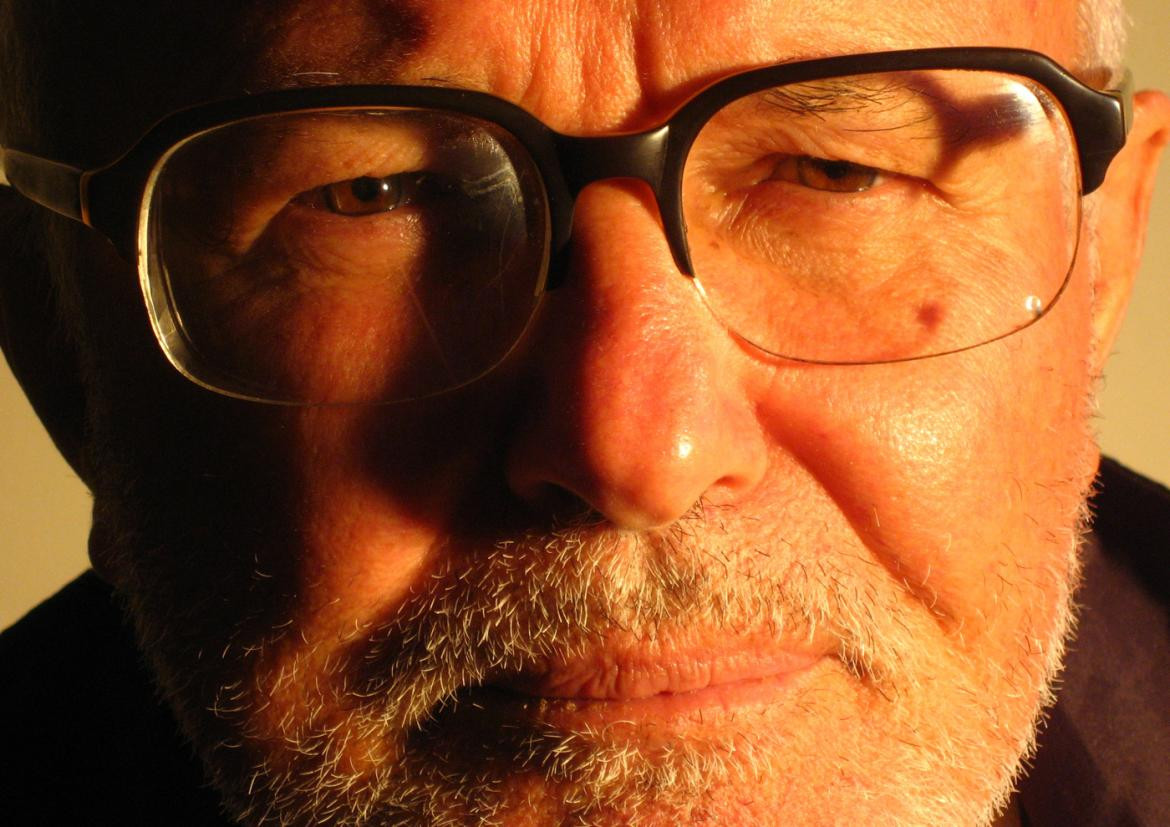 El "Sr. Fernando" reveló detalles del entierro de Hitler en Paraguay. Foto: Jorge Tung. El "Sr. Fernando" reveló detalles del entierro de Hitler en Paraguay. Foto: Jorge Tung.
Canal 26: Marcelo, cuéntenos sobre usted y ¿cómo se vio involucrado en tamaña investigación sobre el entierro de Hitler en Paraguay?
Marcelo Netto: "Soy periodista desde hace 25 años con un máster en Ciencias Sociales. A principios de la década de 2000, trabajé durante un corto período de tiempo para Folha de S.Paulo, considerado uno de los periódicos más prestigiosos de Brasil. Después de unos meses trabajando allí, decidí renunciar al periódico y dejar en suspenso una licenciatura en Ciencias Sociales en la Universidad de São Paulo para vivir con familias del Movimiento de los Sin Tierra. En 2007, cuando ya no vivía en los campamentos y trabajaba para un periódico más pequeño vinculado a los movimientos sociales, un señor vino al periódico para contarnos que había participado en el (segundo) funeral de Hitler en Asunción, Paraguay, el 1 de enero de 1973. Desde entonces, yo y otro amigo periodista (más escéptico que yo) intentamos verificar la historia que nos contó este señor. A lo largo de 14 años, hemos estado cruzando las informaciones con diferentes fuentes y encontrado documentos y vínculos que apoyan considerablemente su testimonio. Es muy difícil llevar adelante este tipo de investigación sin caer en la etiqueta de las teorías de la conspiración. Así que no tuvimos otra opción que contar la historia en una narrativa de ficción".
Canal 26: Como periodista e investigador, comprendo perfectamente lo que es la preservación de la fuente, pero -sin embargo- resulta imposible no preguntarte sobre el informante que activó esta historia. ¿Quién era, cuándo y por qué se presentó a contar esta historia?
Marcelo Netto: "El diferencial de nuestra historia respecto a las demás es que nuestra fuente no nos pide que se preserve su nombre. Además, a diferencia de otros testigos, nos proporciona una dirección concreta donde estaría enterrado Hitler, lo cual también decidimos publicar en el libro. Cuando el "Sr. Fernando" se presenta ante nosotros en mayo de 2007, el Papa Benedicto XVI acababa de terminar su visita a Brasil. El pasado "nazi" de Ratzinger, del que se dice que sirvió a las juventudes hitlerianas, y un comentario de su nieto en el que le preguntaba "por qué él era blanco y no tenía los ojos claros" parecen haber sido los gatillos que faltaban a este sargento retirado del Ejército brasileño para que no se "llevara este secreto al ataúd"".
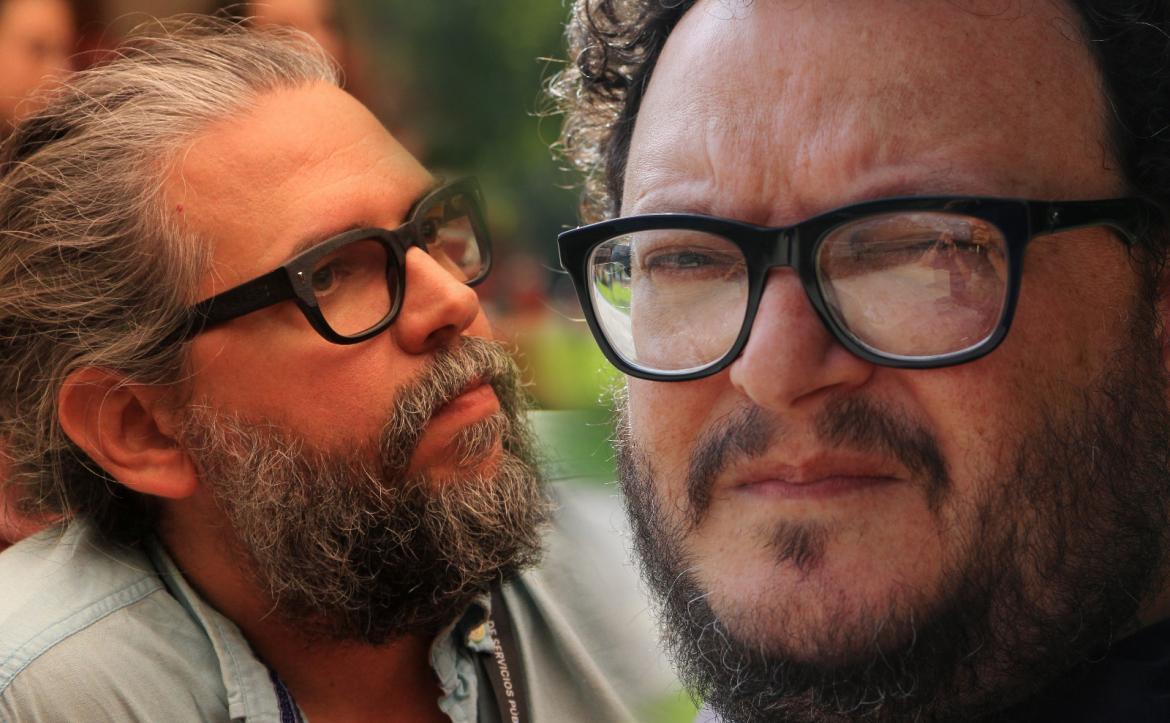 Marcelo Netto y Aldo Gama, los responsables de la investigación plasmada en el libro. Marcelo Netto y Aldo Gama, los responsables de la investigación plasmada en el libro.
Canal 26: El informante aportó una dirección precisa e -incluso- hizo una descripción del lugar en el que presuntamente se produjo el entierro de Adolf Hitler. Pudo usted constatar la existencia de ese lugar, y ha iniciado gestiones para llegar a demostrar lo relatado?
Marcelo Netto: "Todo comienza cuando buscamos en Google la dirección que nos dio el Sr. Fernando, que, según él, en 1973 se reducía a un césped con un pequeño edículo en el fondo del terreno, pero que albergaba un bunker a tres pisos bajo tierra. Al principio no encontramos nada. Pero entonces buscamos por una “avenida”, después de todo, habían pasado más de 30 años. Y, ¡bingo! No sólo coincidía la dirección, sino que era un hotel alemán, que descubrimos que se había construido sobre el terreno en 2003. Cuando estuvimos en el hotel, nos llamó la atención su "topografía" muy sospechosa. Al entrar y pasar la recepción, es necesario bajar unos escalones (haciendo que el suelo esté un poco por debajo del nivel de la calle). La cocina, que pudimos ver a través de una ventana mientras caminábamos por el pasillo principal, estaba aún más abajo, prácticamente en el sótano. Algunas habitaciones del hotel rodean un "jardín de invierno" al aire libre con algunas palmeras. Pensamos: "si el búnker está aquí abajo, esta es la razón por la que, en 2003, no pudieron construir habitaciones sobre el césped que el señor Fernando dice haber encontrado 30 años antes, en 1973. Lo mismo ocurre con el propio búnker de Hitler en Berlín, que hoy está escondido bajo un estacionamiento...". También nos llamó la atención el hecho de que la casa vecina, al fondo de un gran estacionamiento abierto literalmente junto al jardín de invierno del hotel, aunque separada por un muro, es una especie de "residencia de ancianos" con enfermeras que van y vienen. ¿Podría haber sido aquí donde los “kameraden” de Hitler en la vejez los llevaron cuando se construyó el hotel? Esto porque el señor Fernando también comenta que en el búnker, durante el funeral, había unos tantos alemanes que parecían ser jerarcas nazis en silla de ruedas. Dicho esto, no hay manera de no plantear la pregunta: “¿No hay nada construido en su superficie precisamente por el búnker que hay debajo?”. Añadido a esto, recientemente nos enteramos por otra fuente (que hasta entonces no conocía nuestra historia) que el "búnker de Hitler en Asunción" se encuentra justo bajo un estacionamiento…"
Canal 26: ¿Y cómo decidió embarcarse en esta aventura, convertido casi en un Quijote contra los molinos de viento de la historia oficial?
Marcelo Netto: "Dos hechos me animaron a no abandonar, además de que la dirección resultó ser la de un hotel alemán. A finales de 2008, unos dos años después de que empezáramos a investigar, lo que se consideraba la "prueba más concreta" de la muerte de Hitler se vino abajo. Una prueba de ADN reveló que su supuesto cráneo conservado durante años por los soviéticos, ahora rusos, es en realidad de una mujer, de unos 40 años. Otro momento emblemático fue que, tras años de búsqueda, encontramos un documento de la Municipalidad de Asunción que demuestra que el hotel es, de hecho, propiedad de la misma asociación germano-paraguaya que nuestra fuente nos había dicho que era dueña del terreno cuando estuvo allí en 1973 para asistir al (segundo) funeral de Hitler. Y, más aún, haber logrado identificar su relación directa con una colonia alemana, a 80 km de Asunción, que fue la sede de la fundación del Partido Nazi en Paraguay en 1928, uno de los primeros partidos, si no el primero, fuera de Alemania. En el caso de Aldo Gama, que suele decir que, como todo buen Sancho Panza, abrazó la causa "con toda la dedicación que permite el cinismo", no se trató de una transformación inmediata, sino del zumbido del rompecabezas que muestra una imagen cuando las piezas encajan. Si tuviéramos que elegir un momento, un clímax, para él, creo que fue una especie de postal de Juscelino Kubitscheck que descubrimos por casualidad al analizar un montón de documentos en una biblioteca de un instituto alemán en São Paulo. Nuestra fuente dice que Juscelino sabía de la presencia de Hitler en el país y que había enviado un general brasileño muy famoso en la época, el general Lott, a la ciudad donde se encontraba la colonia alemana en la que se escondía Hitler para darle un ultimátum. La postal demuestra que Juscelino estaba allí al mismo tiempo. Lo que nos lleva a preguntarnos: “qué estaría haciendo Juscelino en una ciudad prácticamente insignificante para su campaña electoral?” Resulta que el cambio es gradual. Un documento aquí, una declaración allí, una foto... De repente, lo imposible se convierte en improbable, lo que acaba convirtiéndose en una posibilidad."
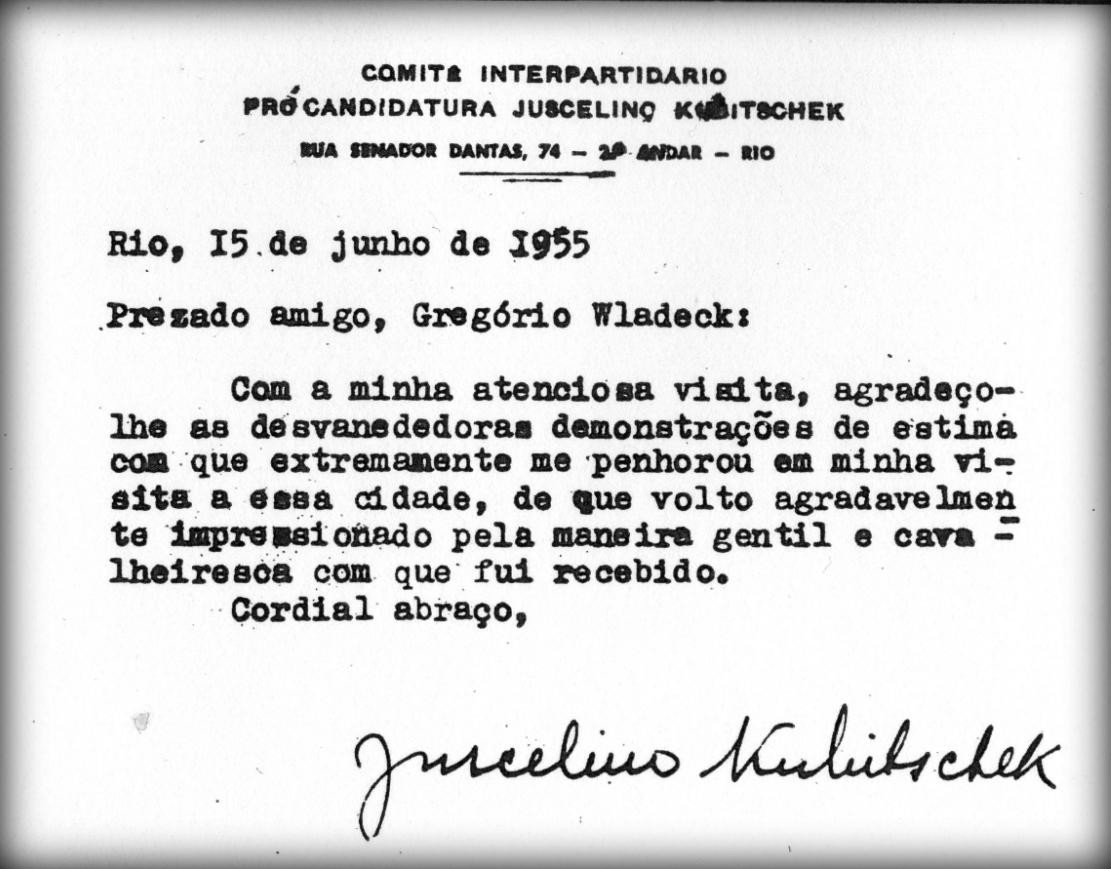 Nota de Juscelino Kubitscheck. 15 de junio de 1955. Nota de Juscelino Kubitscheck. 15 de junio de 1955.
Canal 26: Hasta el momento ¿qué datos pudo efectivamente comprobar y demostrrar de los hechos relatados?
Marcelo Netto: "El libro traza una gigantesca tela de araña que toma forma a través de una interconexión de datos procedentes de diferentes fuentes que nunca han estado en contacto. La declaración del Sr. Fernando, para nosotros, es sólo un punto de partida, el "hilo de Ariadna" y desde el principio nos cuidamos de no asumir que lo que nos dice es verdad. Más aún porque es un personaje muy peculiar, lo que puede llevar a algunos a descartar su historia inmediatamente, sin darse cuenta de que él sigue el mismo patrón de los testigos que dicen haber estado con Hitler después de su supuesto suicidio. En otras palabras, es siempre la empleada de la gasolinera, la criada, el carpintero. Al final, la verdad no sale a la luz más rápido porque nadie se toma en serio la historia de la "gente sencilla", cuando debería ser exactamente lo contrario. Frente a ellos, todos los cuidados son dejados de lado por los nazis que lograron escapar, porque suponen que los "sirvientes" ni siquiera los conocen o porque están seguros de que, además de ser ridiculizados si abren la boca, no tienen poder para hacer nada. Al fin y al cabo, ¿quién les va a hacer caso? Digamos que al menos no hay ninguna incoherencia flagrante que desacredite la historia que el Sr. Fernando nos cuenta, probada a lo largo de 14 años de investigaciones y chequeos. Así que estamos bastante convencidos de que su historia sea verídica. Más aún, en esta misma lógica de seguir el "hilo de Ariadna" que el Sr. Fernando sostiene fuertemente en sus manos, estamos por confirmar que uno de los jerarcas que habría escapado con Hitler de Berlín en la noche del 28 de abril y que, según la historia, murió esa misma noche, en realidad, terminó sus días, ya centenario, en un barrio alejado de la ciudad de de San Pablo, Brasil. El inicio de esta investigación, que sigue en curso, también forma parte del libro."
Canal 26: ¿A qué inconvenientes debió enfrentarse en el curso de esta investigación hoy plasmada en el libro "El hombre que enterró a Hitler"?
Marcelo Netto: "Lo más difícil siempre fue conseguir que quienes escuchaban la historia de nuestra boca de primera mano superaran la "verdad" de que Hitler se suicidó en el búnker, -incluso sin la existencia de un cadáver o de testigos, para poder separar el trigo de la paja de las conspiraciones- y decir que teníamos suficientes pruebas para creer en la historia de un hombre que nos contactó en 2007. A lo largo del camino, hablamos con muchas personas públicas. Incluso nos encargamos de que la información llegara al entonces presidente Fernando Lugo, de Paraguay, a través de su asesor directo cuando estuvimos en Asunción para entrevistar a Lugo sobre otros asuntos. Esto fue apenas unas semanas antes del golpe parlamentario contra él. También tuvimos contacto con algunas productoras. Incluso un contacto más personal con el cineasta Walter Salles, mundialmente famoso por "Estación Central" y "Diarios de motocicleta", que nos ayudó económicamente con parte de la investigación... Después de algunos años insistiendo, la idea del documental se fue alejando. Pero ahora, con la publicación del libro, está más vivo que nunca."
Aldo Gama, co autor de la investigación plasmada en el libro, dice que todo comenzó por cuenta de Marcelo Netto, quien siempre creyó en el relato de su fuente. Aldo dice que, al principio, no le interesaba el tema, principalmente porque estaba convencido de que la versión oficial era la única posible. “Como un Sancho Panza involuntario, terminé persiguiendo este molino por diversión y porque entendí desde el primer momento que era una historia de ficción espectacular. Como la realidad es más absurda que cualquier imaginación, acabé encontrando hechos históricos tan inverosímiles como espectaculares ”, dice.
“Pero mi conversión completa comenzó con un descubrimiento del tipo que solo el azar o la terquedad pueden proporcionar: estaba dormido un domingo por la mañana, escondido en una biblioteca por lealtad al Quijote, y encontré una nota que probaba varias acusaciones en el testimonio. Eso había comenzado todo. Entonces tenía un documento histórico irrefutable que, si no lo probaba, hacía posible la cadena de hechos que perseguíamos”, sigue.
Según Aldo, “por discreción y un poco de burla”, decidieron no aclarar dónde comienza y termina la ficción. “Para el ojo atento, es evidente y no estamos aquí para incentivar la pereza del lector. Hablando Paulocoelhamente, quien busca lo encontrará. Pero prepárate para que el viaje esté lleno de aventuras y el camino esté lleno de baches. ¡Buen batido!"
Por razones directamente relacionadas con el curso de la investigación, y por estrictas medidas de seguridad y confidencialidad, hasta que el lugar sea abierto e inspeccionado por la Justicia, se ha omitido -de manera deliberada- mencionar el nombre y la dirección del hotel en donde se encuentra la cripta funeraria de Adolf Hilter en Paraguay.
"El hombre que enterró a Hitler" (O homen que enterrou Hitler"), Marcelo Netto y Aldo Gama, EditoraContracorrente, Brasil, 2021.
Instagram: @marcelo.garcia.escritor
Notas: El artículo no expresa ideología política, solo investigación histórica.
https://www.canal26.com/historia/el-hombre-que-enterro-a-hitler-el-secreto-oculto-que-cambia-el-curso-de-la-historia-oficial--311088
|
|
|
|
|
Earth from Space – Arc de Triomphe, Paris
Status Report
May 13, 2022

Arc de Triomphe, Paris.
ESA
This striking, high-resolution image of the Arc de Triomphe, in Paris, was captured by Planet SkySat – a fleet of satellites that have just joined ESA’s Third Party Mission Programme in April 2022.
The Arc de Triomphe, or in full Arc de Triomphe de l’Étoile, is an iconic symbol of France and one of the world’s best-known commemorative monuments. The triumphal arch was commissioned by Napoleon I in 1806 to celebrate the military achievements of the French armies. Construction of the arch began the following year, on 15 August (Napoleon’s birthday).
The arch stands at the centre of the Place Charles de Gaulle, the meeting point of 12 grand avenues which form a star (or étoile), which is why it is also referred to as the Arch of Triumph of the Star. The arch is 50 m high and 45 m wide.
The names of all French victories and generals are inscribed on the arch’s inner and outer surfaces, while the Tomb of the Unknown Soldier from World War I lies beneath its vault. The tomb’s flame is rekindled every evening as a symbol of the enduring nature of the commemoration and respect shown to those who have fallen in the name of France.
The Arc de Triomphe’s location at the Place Charles de Gaulle places it at the heart of the capital and the western terminus of the Avenue des Champs-Élysées (visible in the bottom-right of the image). Often referred to as the ‘most beautiful avenue in the world’, the Champs-Élysées is known for its theatres, cafés and luxury shops, as the finish of the Tour de France cycling race, as well as for its annual Bastille Day military parade.
This image, captured on 9 April 2022, was provided by Planet SkySat – a fleet of 21 very high-resolution satellites capable of collecting images multiple times during the day. SkySat’s satellite imagery, with 50 cm spatial resolution, is high enough to focus on areas of great interest, identifying objects such as vehicles and shipping containers.
SkySat data, along with PlanetScope (both owned and operated by Planet Labs), serve numerous commercial and governmental applications. These data are now available through ESA’s Third Party Mission programme – enabling researchers, scientists and companies from around the world the ability to access Planet’s high-frequency, high-resolution satellite data for non-commercial use.
Within this programme, Planet joins more than 50 other missions to add near-daily PlanetScope imagery, 50 cm SkySat imagery, and RapidEye archive data to this global network.
Peggy Fischer, Mission Manager for ESA’s Third Party Missions, commented, “We are very pleased to welcome PlanetScope and SkySat to ESA’s Third Party Missions portfolio and to begin the distribution of the Planet data through the ESA Earthnet Programme.
“The high-resolution and high-frequency imagery from these satellite constellations will provide an invaluable resource for the European R&D and applications community, greatly benefiting research and business opportunities across a wide range of sectors.”
To find out more on how to apply to the Earthnet Programme and get started with Planet data, click here.
– Download the full high-resolution image.
|
|
|
|
|
Brandenburg Gate – the sight in Berlin
I think every visitor to Berlin is drawn to the Brandenburg Gate and Pariser Platz. The gate is the most famous landmark, a good reason for Berliners to drive by and stroll along the tourist paths.
We park our car on the Straße des 17.Juni right next to the statue, which is located on the central reservation of the roadway.
The bronze figure with the distinctive name “The Caller” stands on a pedestal with the inscription “I walk through the world and call peace peace peace”. In 1989 it got its place and “calls” in the direction of the Brandenburg Gate and the former eastern part of Berlin. For me, it is a very expressive figure that would be even better today as a rotating figure “calling” in all directions.
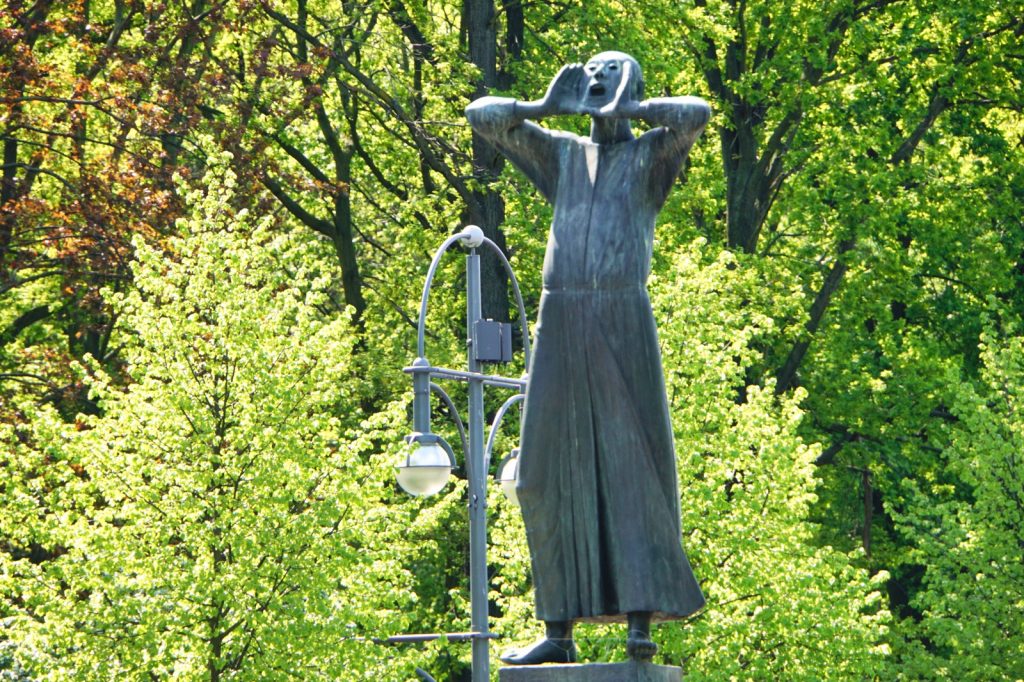
We approach the gate via Platz des 18.März and I take a big step, as I often do, over the paving stones that show the former course of the Berlin Wall in front of the Brandenburg Gate. It occurs to me that I walked through the Brandenburg Gate for the first time in early 1990. This is the only picture in our thousands of family photos that I have found at all that shows the Brandenburg Gate.
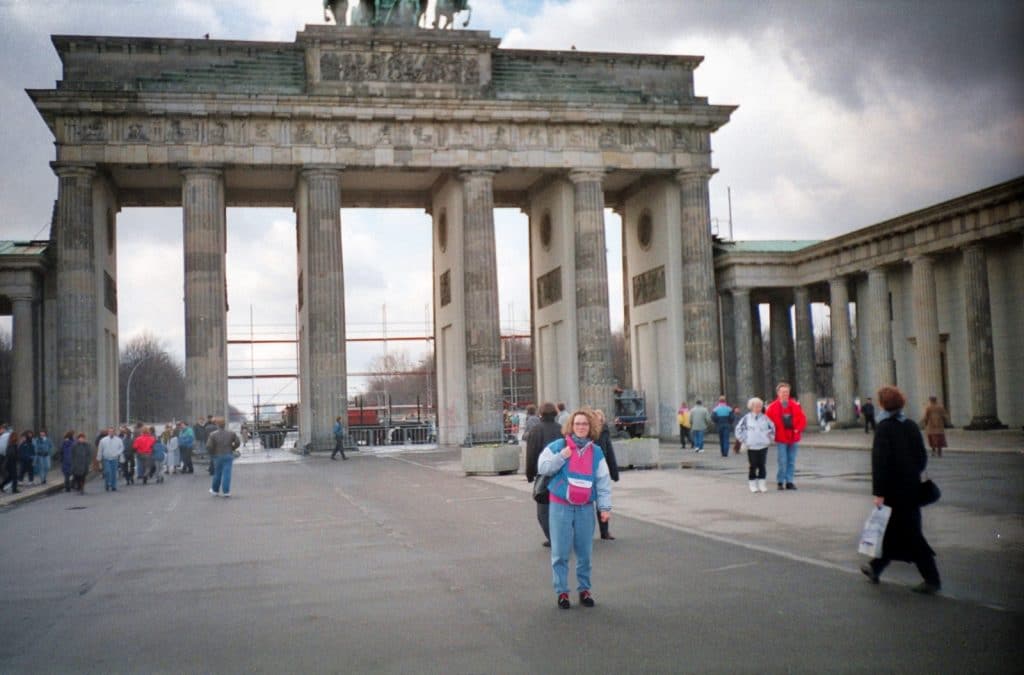 1990 – Susanne vor dem Brandenburger Tor
About the Brandenburg Gate
Around 1670, Dorotheenstadt was built, which was integrated into the city fortifications of Berlin. At the site where the Brandenburg Gate now stands, there was a breach through the rampart and a drawbridge over the moat. The first Brandenburg Gate, so to speak.
In 1734, a customs wall was built around Berlin. The old passage of the rampart became a city gate on the road leading to Brandenburg an der Havel. This gate was dismantled in 1788.
Frederick William II planned to build a new Brandenburg Gate as a representation of his rulers’ domestic and foreign policy. He wanted to have a gate built that resembled a Greek temple and thus present himself as the ruler who would bring Prussia a golden age. The gate was to be called the Gate of Peace and its beauty was to be shown inwardly to the inhabitants of the city.
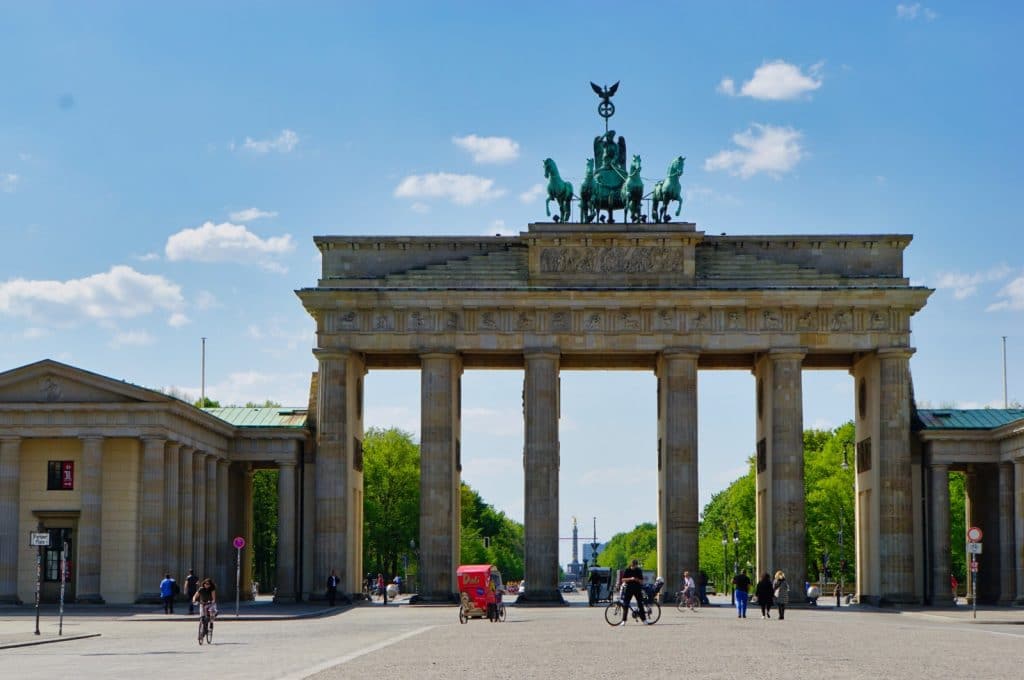
Building the gate
Carl Gotthard Langhans was commissioned by Frederick William II to implement the building plans.
The result was a gateway consisting of two rows of columns. Between each row was a brick and plaster wall, which was necessary to distribute the load of the upper section and the quadriga. This created 5 gateways of different widths. The two wing buildings flanking the sides were built later. They form a transition to the neighbouring buildings, thus creating a kind of courtyard of honour in front of the gate.
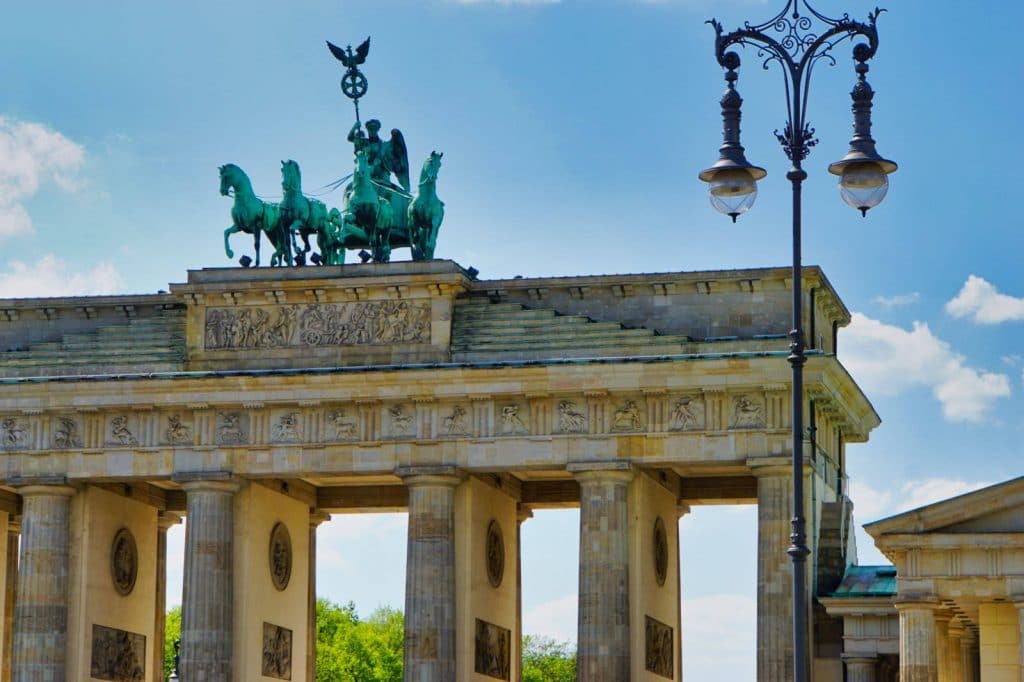
The dimensions of the Brandenburg Gate are already impressive. The gate is 26 metres high up to the top of the quadriga.
Quadriga
The quadriga is the most striking decorative element of the gate. Victoria, the goddess of victory, enters in her chariot and symbolically represents the arrival of peace in Berlin. It was erected in 1793, at which time it was not yet finally decided whether the quadriga should remain copper or whether it would be gilded. It was later decided not to gild it.
The sculpture was subsequently altered when it was realised that the victor’s emblem (spear, helmet, armour, 2 shields) was more recognisable as a lantern from a distance. Victoria was thus given a pole with a victor’s wreath and eagle.
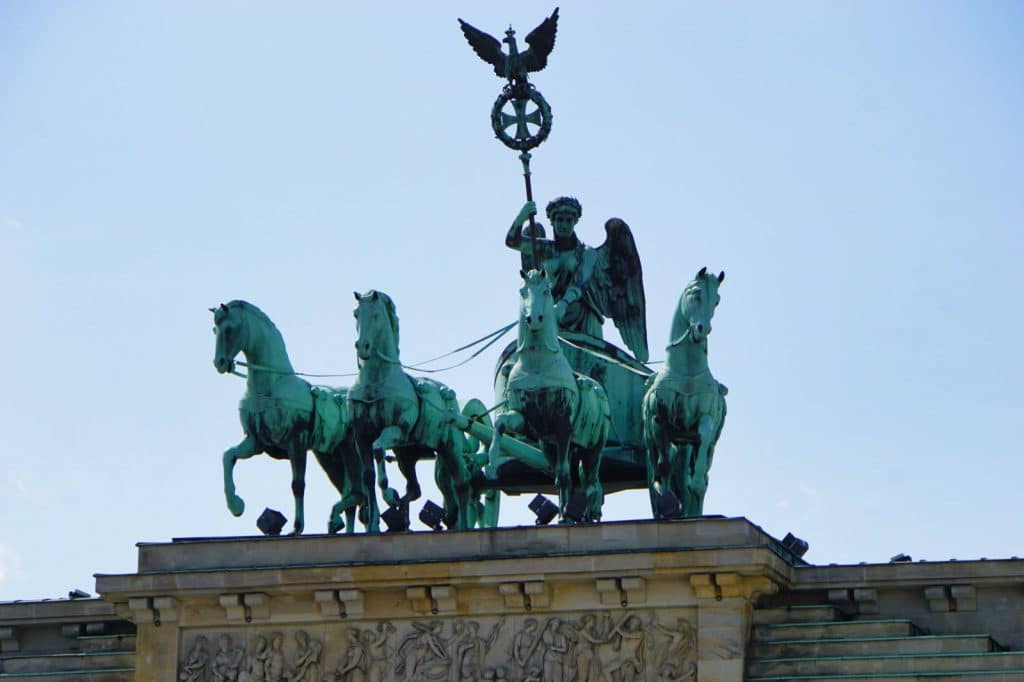
In 1814, the victory symbol was changed once again. Schinkel created a pole crowned by an oak wreath. On the oak wreath sat an eagle with outstretched wings and it enclosed an Iron Cross.
Today there is a replica on the gate. All that remains of the original is a horse’s head, which is in the Märkisches Museum.
Function of the Brandenburg Gate
In the past, the Brandenburg Gate not only had a representative function, but also had to fulfil a function. Anyone who wanted to pass through the gate had to pay an excise duty. Attention was paid to who entered or left the city and, in addition, the soldiers on guard had to make sure that none of their colleagues deserted.
The side wings were used by the tax authorities and the guards as accommodation.
The middle largest passage served as a thoroughfare and could be closed with gate wings. Only the equipages of the yard were allowed to pass through this gate. At night, the gate was closed with wooden doors. With the expansion of the town in 1861, the gate was no longer locked.
Stories around the Brandenburg Gate
There are many stories in which the Brandenburg Gate plays a role. I have written down three of them.
How the Quadriga left Berlin and returned
On 27 October 1806, Napoleon marched through the Brandenburg Gate in Berlin as the winner of the Fourth Coalition War against Prussia. He issued instructions to dismantle the quadriga and send it to Paris.
At the beginning of December, the statue was dismantled and packed into 12 crates and sent to France. It finally arrived in Paris on 17 May 1807. Napoleon actually wanted to place the quadriga on a newly built triumphal arch. However, due to the dismantling, disassembly and transport, the figure showed great damage and had to be restored. The work was completed in 1808 and it was placed in the Louvre.
Prussia was naturally anything but happy about this action. On top of the Brandenburg Gate, only a fortification iron stuck up like a thorn in this wound.
At the end of March 1814, the Prussian army won the wars of liberation and marched into Paris. After the quadriga had been tracked down, it was immediately taken apart again, packed into 15 crates and transported to Berlin. As soon as the crates reached Prussian territory, the repatriation resembled a triumphal procession. After the carriages reached Berlin, the individual parts were restored in the Grunewald hunting lodge. It was also at this time that the new victory emblem for Victoria was created. In the summer of 1814, the Quadriga was put back on the Brandenburg Gate. Yes, and how could it be otherwise in Berlin, the Quadriga promptly received the nickname “Retourkutsche”.
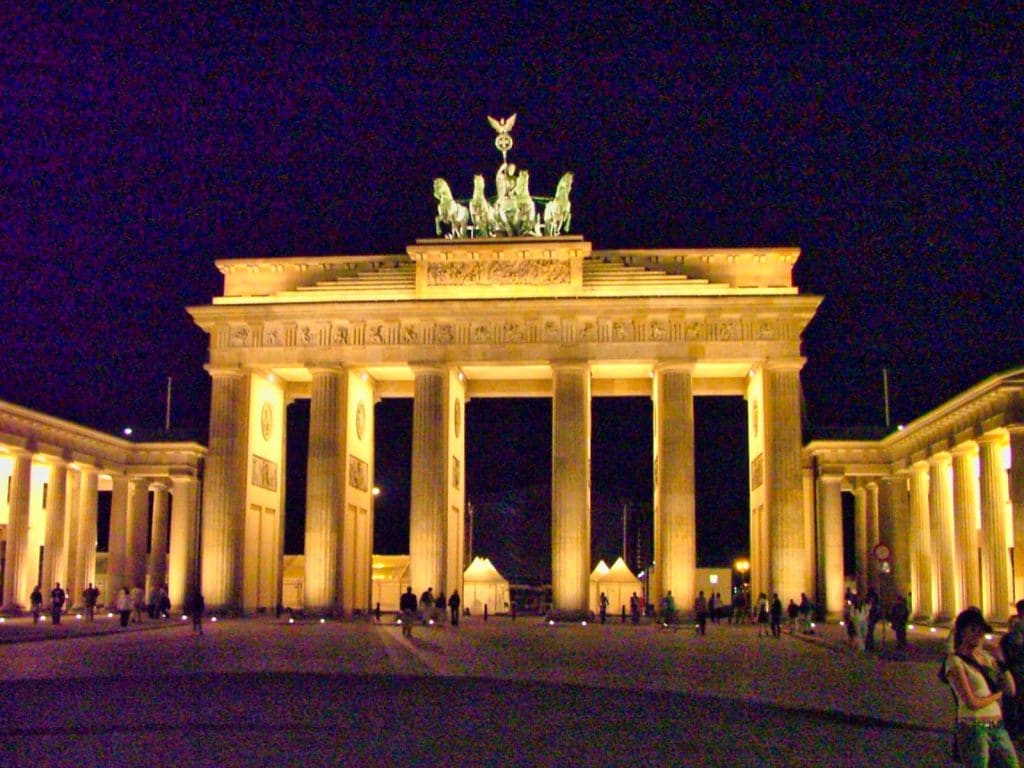
Brandenburg Gate station
In 1815, about 30 horse owners were granted permission to hire out their horse-drawn carriages around the Brandenburg Gate. Anyone was allowed to hire the carriage and not only, as had been permitted previously, people from the court, nobility or respected artists. Many could not afford it at the time and so the carriages usually stood empty on the street.
In 1825, Hofrat Kremser had an idea that the king initially approved on a trial basis. Kremser placed larger spring-loaded carriages for 10-20 people at the Brandenburg Gate. He laid down precise routes that these carriages were to follow and posted them on the carriages. In addition, Kremser designated stops and fixed departure times for the carriages. The so-called Kremsers were enthusiastically accepted by the Berliners and soon the horse-drawn buses departed from the Brandenburg Gate in a star formation.
Was the quadriga always looking in the same direction?
Unfortunately, apart from a horse’s head, the quadriga was destroyed during the Second World War. Since a plaster cast existed, the reconstruction succeeded and at the end of 1957 it stood again on the Brandenburg Gate.
There is a rumour that it once stood the other way round, facing the western part of Berlin. It is said to have been turned around in a night and fog operation. However, this claim is false.
It is true that one night in August 1958 the Quadriga was secretly moved to the Neue Marstall. There the Iron Cross was removed. The East Berlin city council did not want to display the emblems of Prussian-German militarism. They were then put back on the Brandenburg Gate.
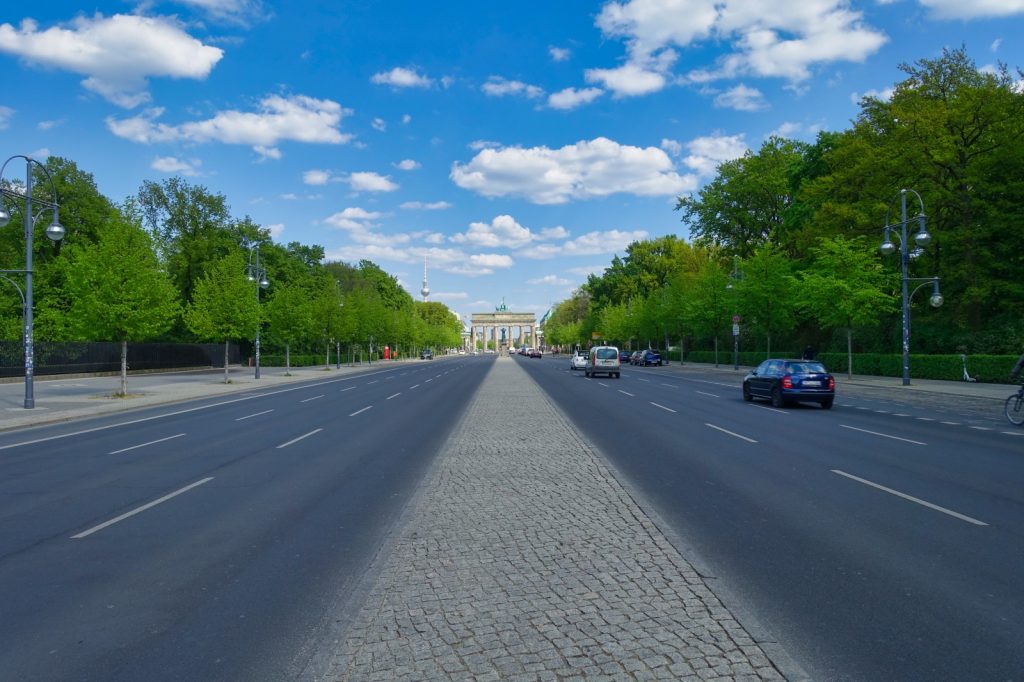
The Brandenburg Gate – a gate as a symbol of German history
On 13 August 1961, the Wall was erected in Berlin, dividing the city into West and East. The Brandenburg Gate stood in the middle of the restricted area and was no longer accessible to Berliners.
Now only GDR border guards or invited guests (on the GDR side) could access a visitor platform. Those of us in the western part of the city could only see the Brandenburg Gate from viewing platforms at an appropriate distance.
There are numerous quotes and statements by people about the Brandenburg Gate and the political situation at that time. One visit is commemorated today by a memorial plaque on the walkway to the gate. In the summer of 1987, the then US President Ronald Reagan spoke the following sentence in front of the gate: “Mr.Gorbachev, open this gate! Mr.Gorbachev, tear down this wall!”
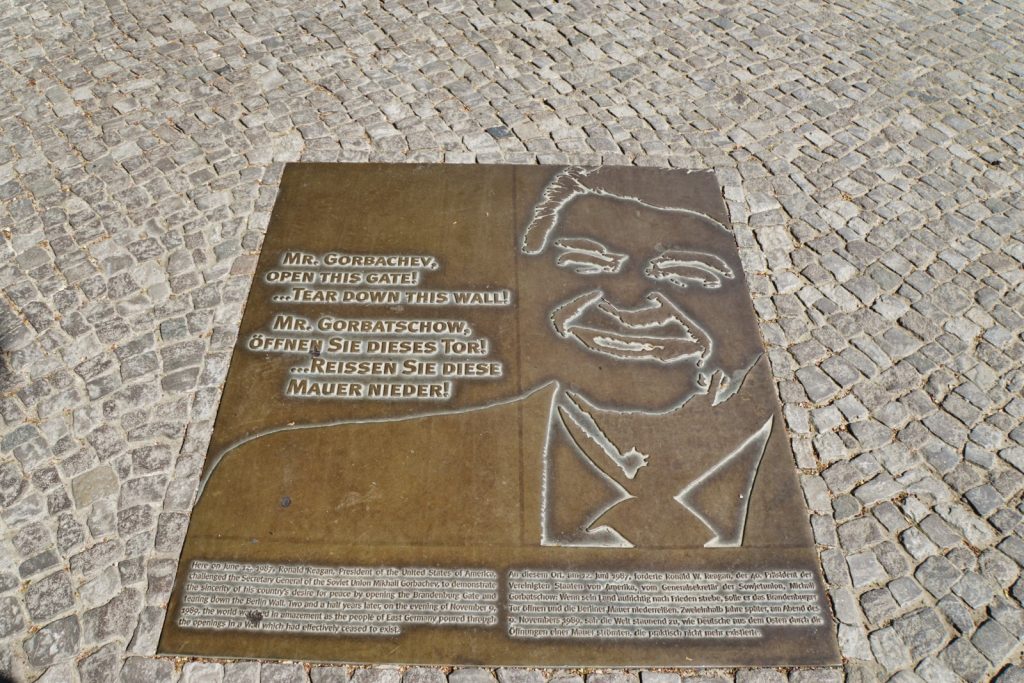
Only 2 years later, 28 years after the Wall was built, the Brandenburg Gate was reopened on 22 December 1989. Later, the barriers were also removed. I walked through the gate for the first time in spring 1990. It was a moment that Berliners will not soon forget.
The square in front of the Brandenburg Gate – Pariser Platz
The original square was built in 1732-1734 as an extension of Friedrichstadt. Aristocratic palaces stood around the square. In 1814, after the Prussian troops had conquered Paris, the square was named Pariser Platz.
During the Second World War, the square was heavily destroyed. The remaining buildings were gradually demolished. After reunification, the square was redesigned and an attempt was made to combine modern and historical elements.
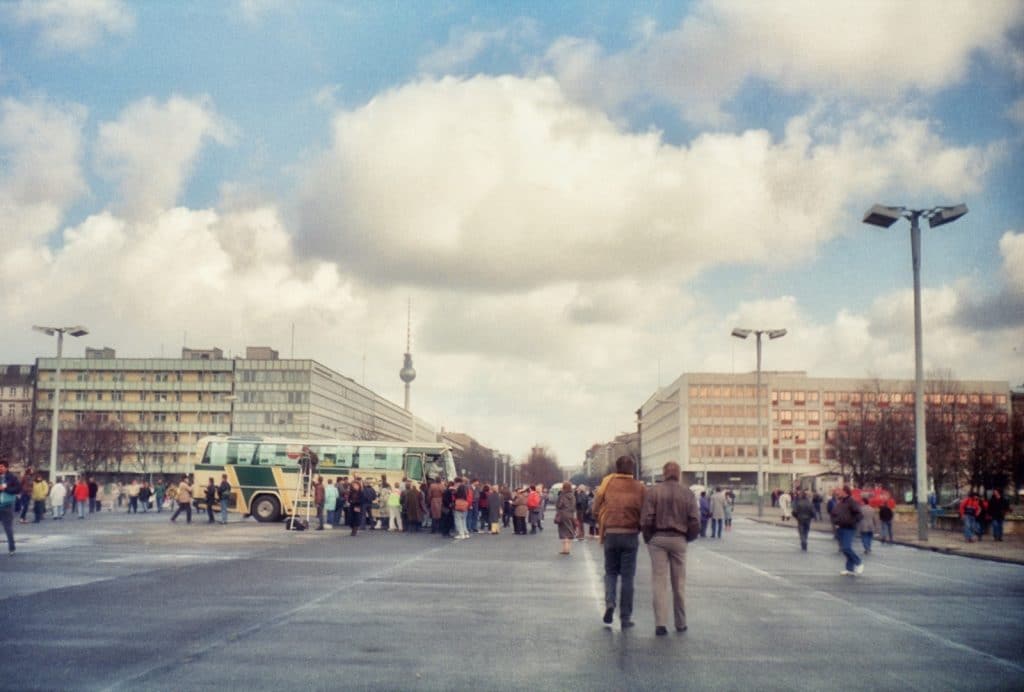 Pariser Platz 1990 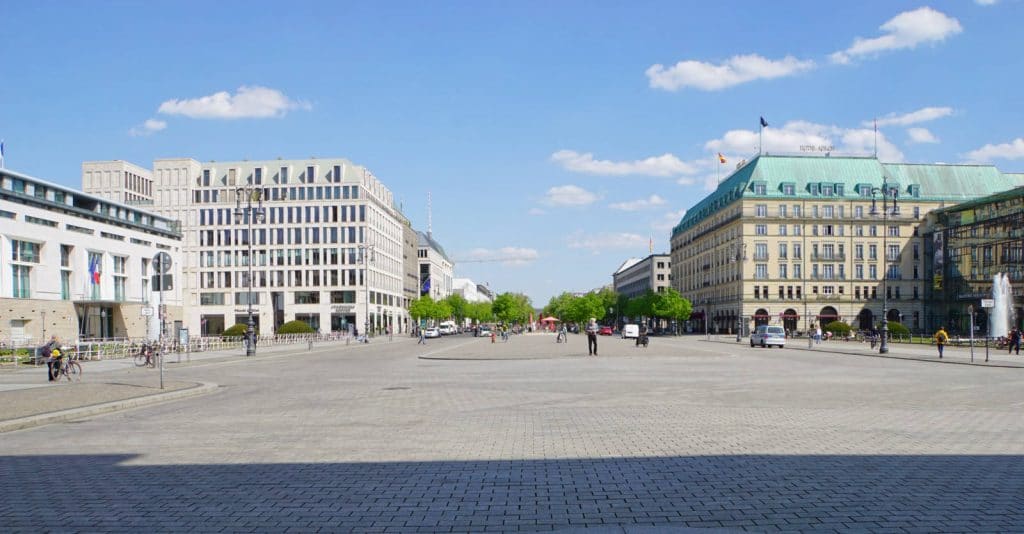 Pariser Platz 2020
For me, next to the Brandenburg Gate, the Hotel Adlon is probably the most famous building on Pariser Platz. The hotel stood on Pariser Platz as early as 1905. From the outside, it looked rather classically conservative for its time. The interior was state-of-the-art: electricity and running hot water were standard in the guest rooms. This attracted guests from all over the world; even Wilhelm II preferred to stay in the heated rooms of the hotel in winter rather than in the draughty palace. In 1945, the hotel burned down and was demolished except for the side wing. This was then demolished in 1984.
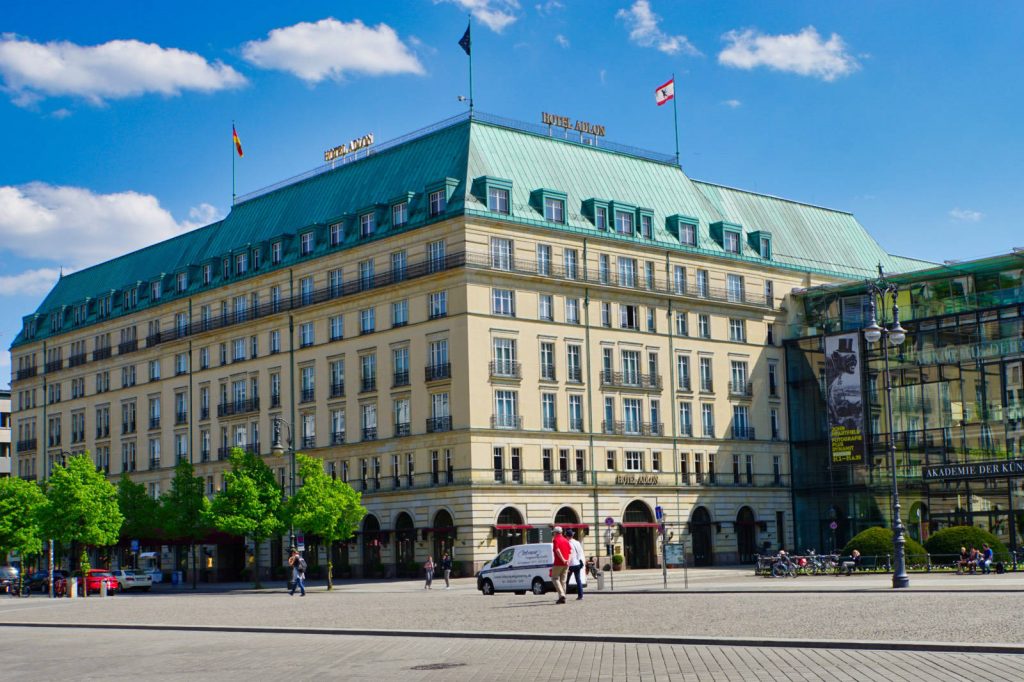
After the fall of the Wall, a new hotel complex was built on the same site (1995-97). It is not a reconstruction of the old hotel, but a new design that is stylistically based on the historical model. And as in those days, the Adlon is now a popular and exquisite hotel in the heart of Berlin.
Leaving Pariser Platz, you can then stroll along the street Unter den Linden until you reach Museum Island, the Berlin Cathedral and Alexanderplatz.
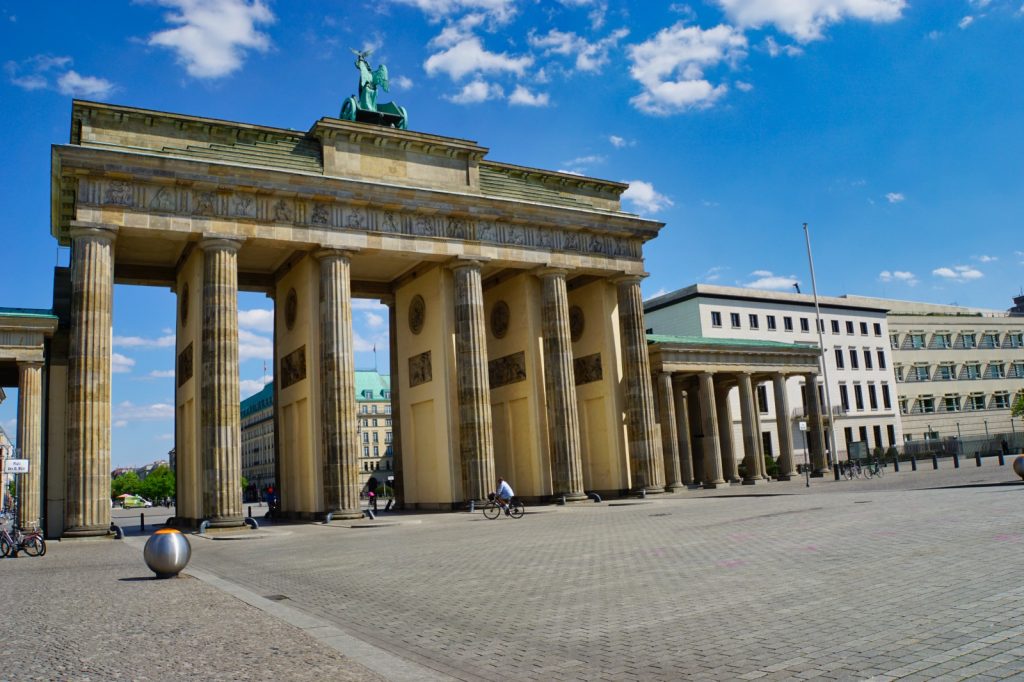
Address:
Pariser Platz 1
10117 Berlin
https://fromplacetoplace.travel/germany/berlin/brandenburg-gate/ |
|
|
 Primer
Primer
 Anterior
2 a 5 de 5
Siguiente
Anterior
2 a 5 de 5
Siguiente
 Último
Último

|
|
| |
|
|
©2025 - Gabitos - Todos los derechos reservados | |
|
|
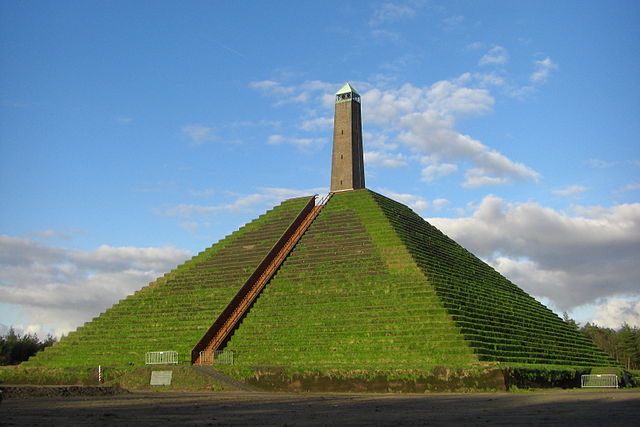
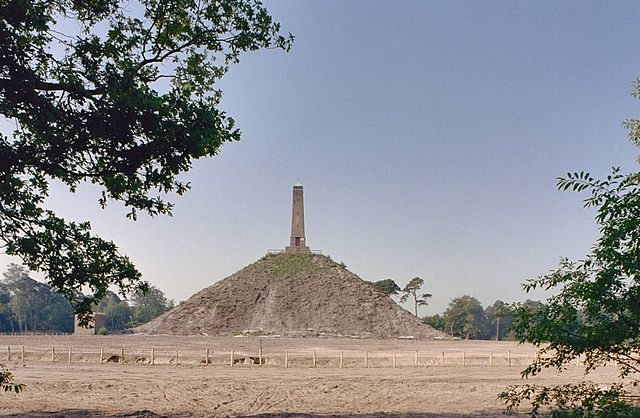
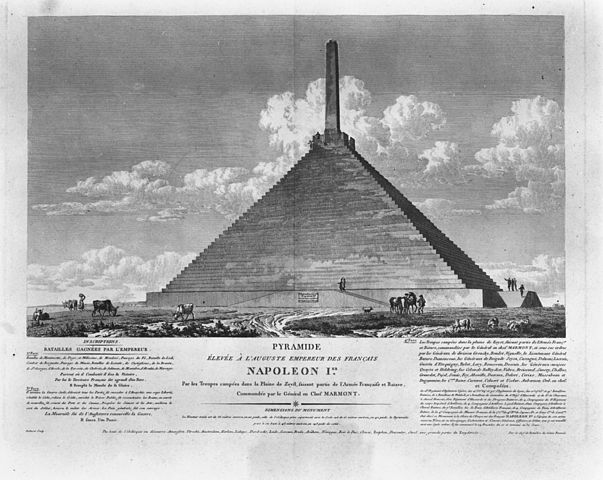
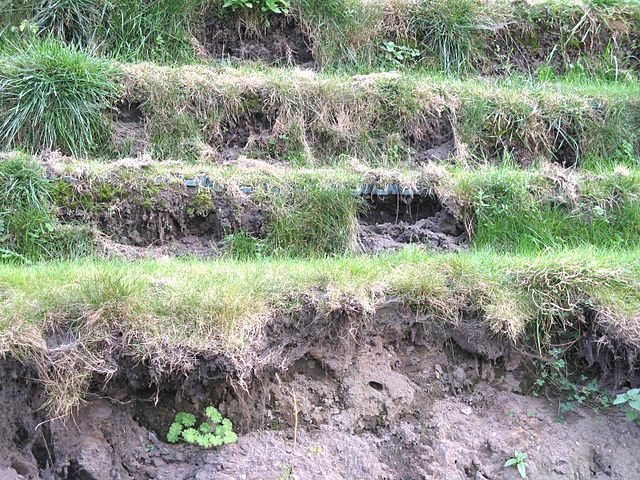
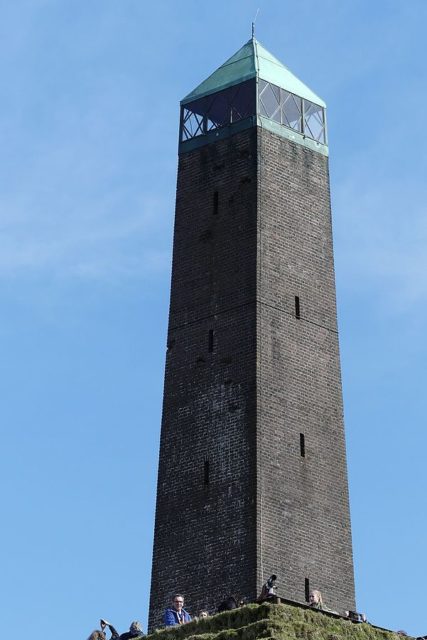
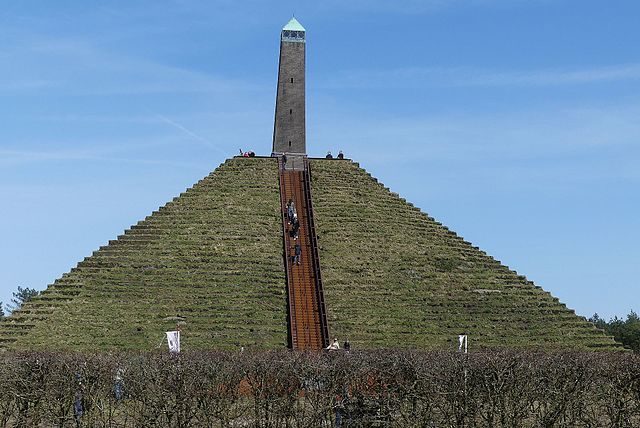
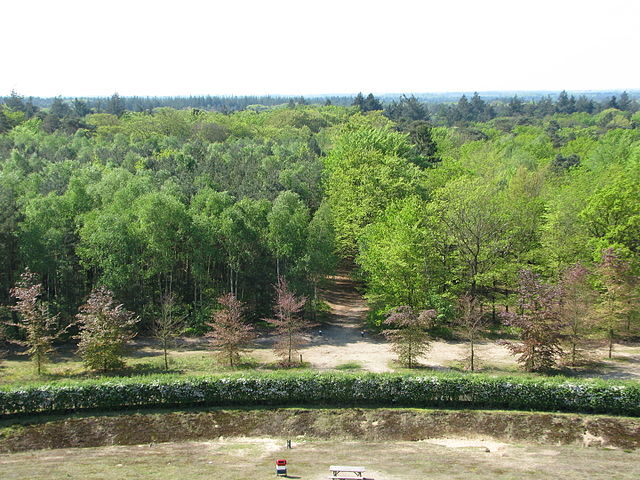

 Left: The Pyramid of Austerlitz and the stone obelisk before restoration Photo credit: Rijksdienst voor het Cultureel Erfgoed, CC BY-SA 4.0. The central staircase Photo credit: G.Lanting, CC BY-SA 4.0
Left: The Pyramid of Austerlitz and the stone obelisk before restoration Photo credit: Rijksdienst voor het Cultureel Erfgoed, CC BY-SA 4.0. The central staircase Photo credit: G.Lanting, CC BY-SA 4.0  "El hombre que enterró a Hitler" y el "Sr. Fernando", quien activó la investigación.
"El hombre que enterró a Hitler" y el "Sr. Fernando", quien activó la investigación.
 El "Sr. Fernando" reveló detalles del entierro de Hitler en Paraguay. Foto: Jorge Tung.
El "Sr. Fernando" reveló detalles del entierro de Hitler en Paraguay. Foto: Jorge Tung. Marcelo Netto y Aldo Gama, los responsables de la investigación plasmada en el libro.
Marcelo Netto y Aldo Gama, los responsables de la investigación plasmada en el libro. Nota de Juscelino Kubitscheck. 15 de junio de 1955.
Nota de Juscelino Kubitscheck. 15 de junio de 1955.







